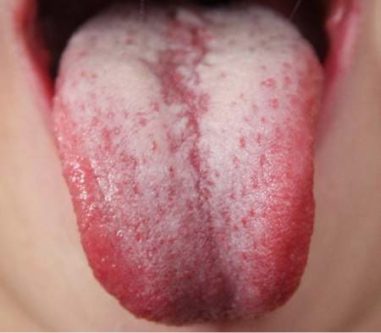Oral Thrush Causes, Symptoms, Diagnosis and Treatment

What is Oral Thrush?
Oral thrush is candidiasis that occurs in the mouth. That is, oral candidiasis is a mycosis (yeast/fungal infection) of Candida species on the mucous membranes of the mouth.
Oral thrush causes creamy white lesions, usually on one’s tongue or inner cheeks.
Sometimes oral thrush may spread to the roof of the mouth, the gums or tonsils, or the back of the throat.
Causes of Oral Thrush:
Small amounts of the candida fungus are present in the mouth, digestive tract, and skin of most healthy people. They are normally kept in check by other bacteria and microorganisms in the body.
However, certain illnesses, stress, or medications can disturb the delicate balance, causing the fungus candida to grow out of control and causing thrush.
Medications that upset the balance of microorganisms in the mouth and may cause thrush include:
- Corticosteroids
- Antibiotics
- Birth control pills
Illnesses or medical situations that make candida infection more likely include:
- Uncontrolled diabetes
- HIV infection
- Cancer
- Dry mouth
- Hormonal changes that occur with pregnancy
- Vaginal yeast infection
The following factors increase the likelihood of developing oral thrush:
- Being an infant or elderly
- Having a weakened immune system
- Wearing dentures
- Having other health conditions, such as diabetes
- Taking certain medications, such as antibiotics or oral or inhaled corticosteroids
- Undergoing chemotherapy or radiation treatment for cancer
Symptoms of Oral Thrush:
Signs and symptoms vary according to the age group of the affected individual.
- Children and adult
- Creamy white lesions on the tongue, inner cheeks, and sometimes on the roof of your mouth, gums and tonsils
- Slightly raised lesions with a cottage cheese-like appearance
- Redness or soreness that may be severe enough to cause difficulty eating or swallowing
- Slight bleeding if the lesions are rubbed or scraped
- Cracking and redness at the corners of the mouth (especially in denture wearers)
- A cottony feeling in the mouth
- Loss of taste
- Difficulty swallowing
- Infants and breastfeeding mothers
- Fussy and irritable infants
- Unusually red, sensitive, cracked or itchy nipples
- Shiny or flaky skin on the darker, circular area around the nipple (areola)
- Unusual pain during nursing or painful nipples between feedings
- Stabbing pains deep within the breast
Diagnosis of Oral Thrush:
Oral thrush can be diagnosed by the following procedures:
- Physical examination of the tongue
- Throat culture
- Endoscopic exam
Treatment of Oral Thrush:
Oral Thrush can be treated in the following ways:
•Medications
Topical anti-fungal drugs
- Nystatin,
- Miconazole,
- Gentian violet
- Amphotericin B.
•Improving oral hygiene
By : Natural Health News




